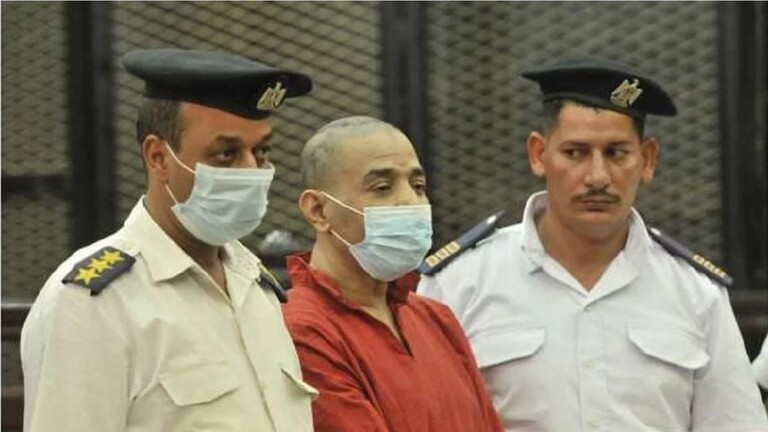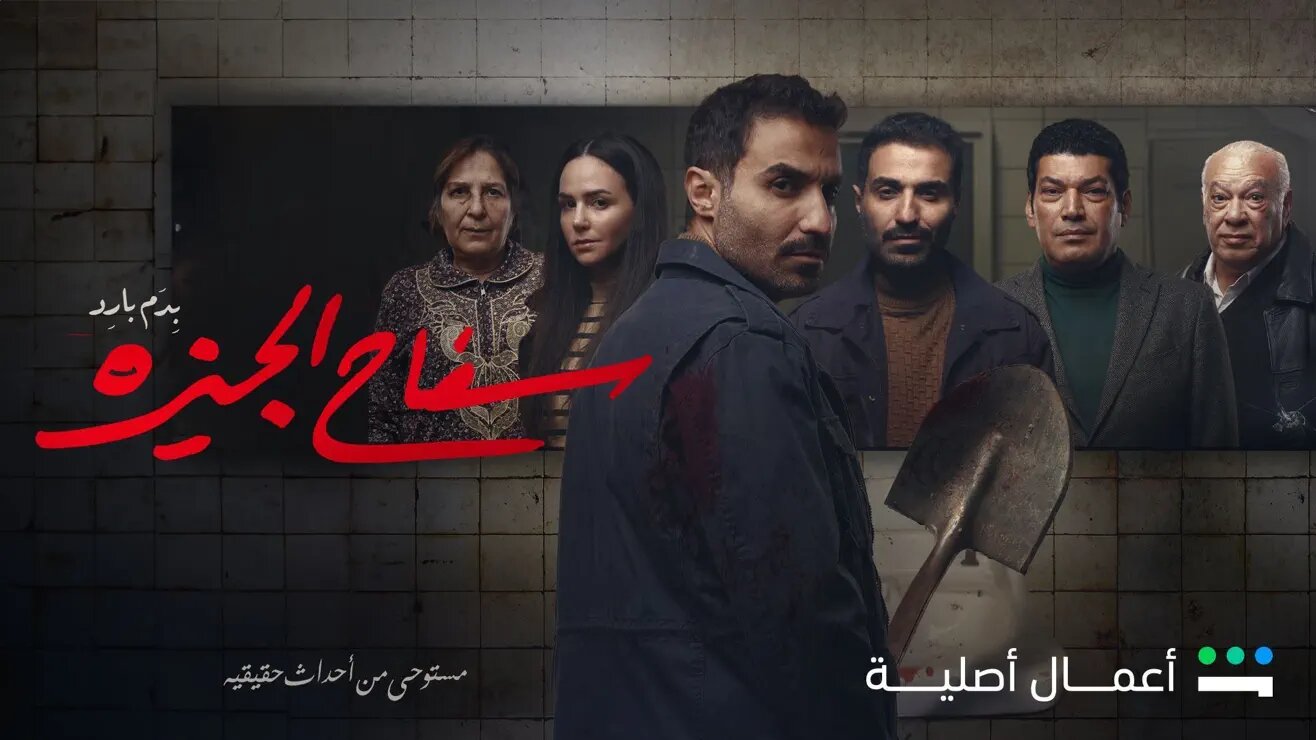If the chronology of the show’s events is confusing, it’s time to hit pause. Here is a breakdown of what actually down according to the criminal court case.
Featuring the stories of four victims, several fake identities and one murderer currently on trial—Shahid TV’s newly released “The Butcher of Giza” (Safah El Giza) is the talk of the town.
The latest megahit series has kept binge watchers in the Middle East and North Africa glued to their screens whilst flooding social media with their commentaries on the show’s chilling episodes.
Within just a week of its release, the miniseries has climbed up in rankings, becoming the second-most viewed show on Shahid in Qatar and the most-viewed in Egypt.
The new release is a biopic of the most notorious serial killer in Egypt’s modern history, Gaddafi Farag, whose case has been under the focus of Cairo’s authorities since his arrest in 2020.
Starring Ahmed Fahmy, Rakeen Saad, Basem Samrah and other popular regional actors, the series offers a grisly take on Gaddafi’s tactical murders of his close friends and family.
In the series, Gaddafi, who is portrayed by Fahmy, manages to escape each crime scene with multiple fake identities and a charismatic facade that kept him away from the eyes of Egyptian authorities.
But the queasy and incredibly detailed adaptation of the true crime only managed to come to life after two years of rigorous research by the show’s creators, involving psychiatrists and lawyers.
Fahmy, who is widely known for his comedic acting roles, reportedly spent years studying Gaddafi’s character, from the apathetic facial expressions to perfecting knife-handling techniques in order to accurately portray his role.
Despite some major discrepancies in the chronology of events between the series and the true story, the search for the true story of the Giza’s notorious Butcher has kept web browsers in the region busy.
So who is the actual criminal?
Five years of murder
If the chronology of the show’s events is confusing, it’s time to hit pause. Here is a breakdown of what actually went on in the criminal case.
Prior to staining his hands with blood, Gaddafi was known among his Cairo community as a respectable man of “high morals”, at least according to the descriptions of Egyptian media.
Reports commonly state that Gaddafi was also a law graduate who owned a chain of bookstores and a children’s toy factory.

In 2012, Gaddafi met Reda Abdel-Latif, an Egyptian engineer who worked in Saudi Arabia, in what marked the beginning of a rocky friendship. Within the first couple of years of knowing each other, Reda trusted Gaddafi enough to invest in some of his businesses.
However, after receiving nothing out of his investments from Gaddafi, Reda returned to Egypt in 2015 to demand his money.
A brief period of back-and-forths ensued between the friends and a battle between Gaddafi’s inner Jekyll and Hyde led to one decision—the murder of Reda.
Gaddafi decided to invite his so-called friend to his house in Boulaq, Cairo, where he poisoned and murdered him before burying the body in his house.
To ensure that no one finds the body, Gaddafi also covered the site with ceramic and sent a message through Reda’s mobile phone to his wife that he had been arrested in a protest.
At the time, the excuse made perfect sense as protests were taking place in Egypt against the military coup, which saw now President Abdel Fattah El-Sisi rise to power.
From that moment, Gaddafi started posing as Reda after stealing his identity, marking the beginning of his murders and a series of fraudulent activities.
In 2015, Gaddafi met his second victim, Nadine El Sayed El Gendy, a young model and actress in the making. Nadine, known as Zeina in the series, was the sister of another woman whom Gaddafi, or Reda, had planned to marry.
But Nadine was quick to find out about Gaddafi’s frauds and threatened to expose him.
When all efforts to silence Nadine failed, Gaddafi decided to murder her and bury her next to Reda, using the same method he had used before to cover her body.
Gaddafi then carefully crafted a lie for the El Genedy family, claiming that Nadine had run away with a Syrian filmmaker to France.
Then came Gaddafi’s third victim: Fatima Zakaria El Zahraa.
The silent murderer had lured Fatima into marriage, but it was only a matter of time until their relationship took a murky turn. Fatima had taken 400,000 Egyptian pounds from Gaddafi during a fight between them in order to ensure that he did not marry another woman.
When the pair got back together, Fatima refused to return the amount to Gaddafi.
Overcome with greed, the serial killer murdered Fatima and stole her entire jewellery collection before burying her in their home without leaving a trace behind.
Gaddafi would remain dormant for a couple of years, while still impersonating his murdered friends, until his dark side emerged once again in 2017.
Still posting as Reda, the serial killer moved from Cairo to Alexandria, where he employed a woman named Yasmine Nasr Ibrahim at his new electronics store.
After succeeding in charming Yasmine, he managed to sell an apartment that she had owned for 45,000 Egyptian pounds without her knowledge. Once Yasmine discovered Gaddafi’s move, she demanded her money back, only to be murdered in 2017 and buried inside the store.
Years later, he would marry the daughter of a wealthy doctor who gave him his first child, though their marriage did not last too long. Following their divorce, Gaddafi managed to break into his ex-wife’s residence, stealing her money and jewellery.
The woman’s family almost immediately pointed their fingers towards “Reda”, but were unable to take any action against the criminal because they found nothing under Gaddafi’s fake identity.
The arrest
Gaddafi had changed his identity in 2019 from Reda to Mohamed Mustafa, an engineer, in an attempt to start a new life with new victims.
At that time, he lured a woman to marry him before stealing all of her jewellery and disappearing—but that was only the beginning of the end of his crimes.
Gaddafi had attempted to sell all his stolen jewellery to a shop, unaware that the jeweller was his last victim’s friend.
The jeweller eventually informed her about all of his movements leading to his arrest; Egyptian authorities were waiting to arrest Gaddafi in 2020 as he returned to the jewellery store to pick up the money.
The government then unveiled Gaddafi’s true identity after Reda’s parents requested that authorities search for their missing son.
Where is Gaddafi now?
Eventually, Gaddafi confessed to all of his murders and showed the police the places where he had buried his four victims. Egyptian authorities charged Gaddafi with four counts of murder and a number of fraud offences, though his lawyers have appealed against the four death sentences.
The latest development on the case emerged on Saturday, when the Court of Cassation set 11 January and 26 February 2024 as the dates for the next sessions in order to make the definitive decision on whether to allow the criminal to appeal the death sentences.
Most strikingly a recent analysis by a psychiatric hospital in Egypt concluded that Gaddafi is fully mentally stable.
Until the court hearings resume, the Giza Butcher will likely remain the talk of the region and possibly garner more media attention in the coming months.
For now, audiences are left with the fictionalised version of the events as they curiously await the final fate of Gaddafi.







